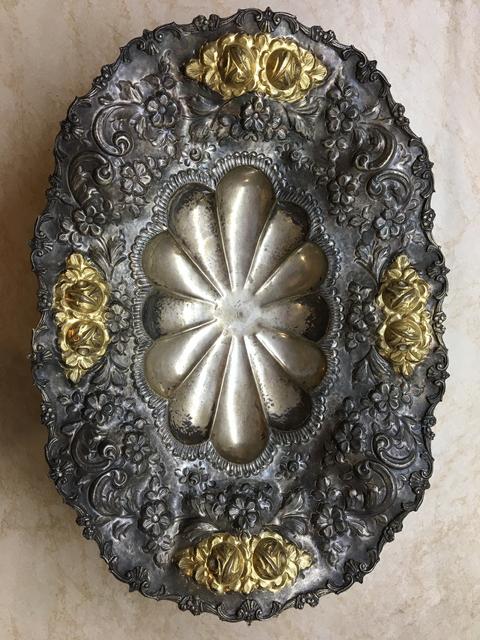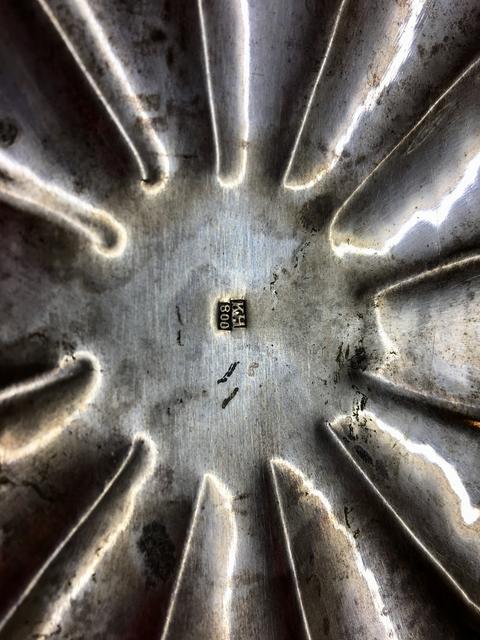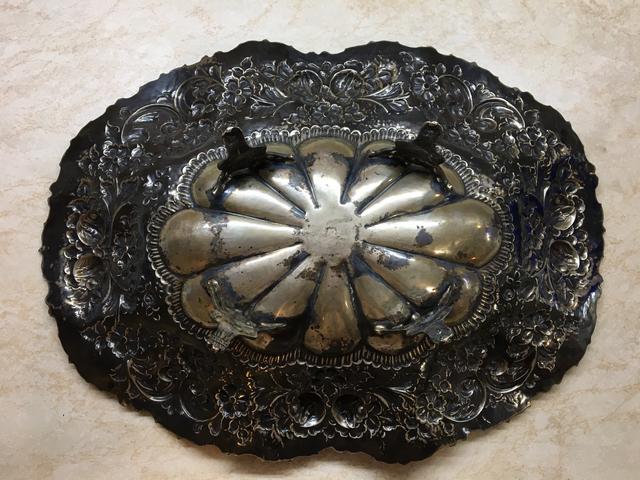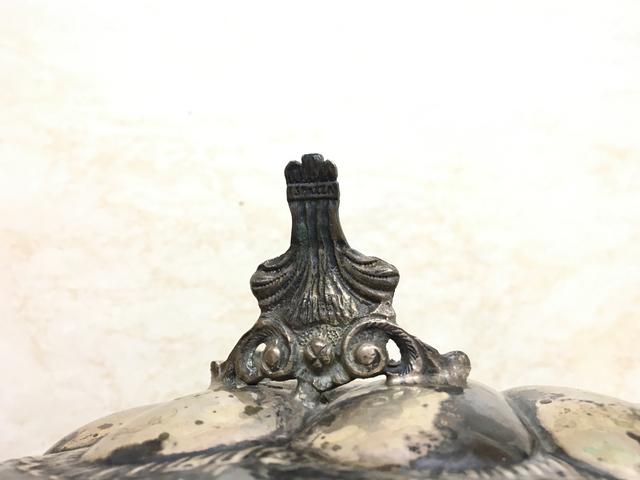And 2 words on 1 leg Spazza and on another side Gaio, I've check it is Italian words. The weight in 949 gramm. I have red a lot of information but didn't find such mark. Maybe someone know who is the master KH and what is the country of manufacture?








I read this but can’t find similar pieces of silversmith. To understand where and when it was madeTraintime wrote:Might start with "Unsanctioned Common Marks" section here: https://www.925-1000.com/Fitalian_marks_01.html
Thank you for your reply. I saw a few silver vases and plates with both marks Germany and Italy. I examine Karl H. objects but there are few of them in Internet. What is Bahner's expertise? Only 1 leg with 2 words: Spazza and Guai Maybe you r right the legs seems to be from another object because of the way they attached to plateTraintime wrote:I hate to drop in a complication, but because only the legs are marked in Italian and things can be mated, we might need Bahner's expertise to rule out a truncated version of the c.1920's-1940's mark of Karl Hohmann: https://www.925-1000.com/Fgerman_marks_a1884_4.html
I don't know why a German maker might be using Italian legs or markings, but there was a thing called the Axis Powers for a short while. And some German 800 marks do appear in these rectangle sinks as well.

Ok, l”ll examine solder. But what about mark KH I thought that the clue to country, date and manufacturer. I even can’t find similar vases to campareAG2012 wrote:Legs transferred from another object ?
Examine the solder with the tip of a sharp needle.Soft tin lead solder will be scratched, hard solder is impossible to scratch.
Hard solder is the proof of genuine manufacture because heating of the entire object is needed and then immersion into pickling acid solution that would have destroyed gilding.
In short, I think legs with retailer name belong there unless fixed with soft solder.
Regards
Maybe this mark is dedicated to special event like wedding?amena wrote:I did not find any Italian manufacturer from 1935 to 1970 called Spazza or Guai or Guaio or Gaio.
The funny thing is that in Italian " spazza guai" means sweeps away troubles.
Hello, thank you for your reply. Is this german mark?Bahner wrote:Hello, the object is untypical for Hohmann so i do not think this is his product. Have no clue though, sorry. Regards, Bahner
Maybe you can advise where should i search?)Bahner wrote:Hello, the marks do not ring a bell so my guess is as good as yours. Regards, Bahner
I've checked the solder and it is hard and not soft. So legs has been added before gild. I've checked all hallmark and didn't find any KH 800 without any other marks near. So it is no-name silversmith from Italy)AG2012 wrote:Legs transferred from another object ?
Examine the solder with the tip of a sharp needle.Soft tin lead solder will be scratched, hard solder is impossible to scratch.
Hard solder is the proof of genuine manufacture because heating of the entire object is needed and then immersion into pickling acid solution that would have destroyed gilding.
In short, I think legs with retailer name belong there unless fixed with soft solder.
Regards
I’ve found another bowl with same markamena wrote:It is very unlikely that an Italian silversmith has the initials K Y, and even the style does not seem Italian. If I had to guess, I would say German. but it's just a guess.
Regards
Amena